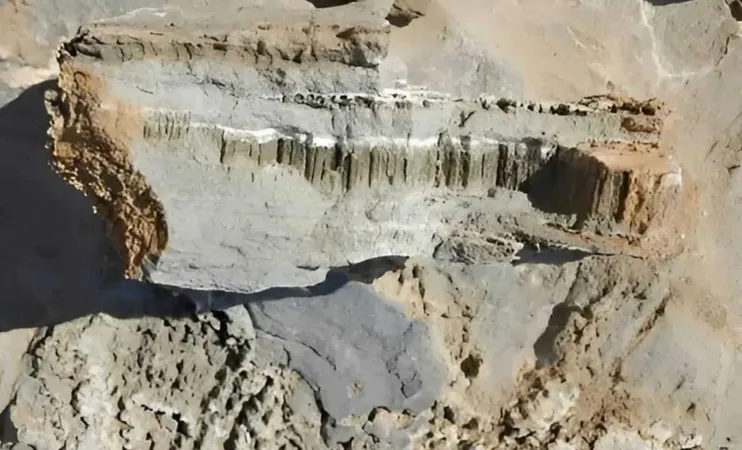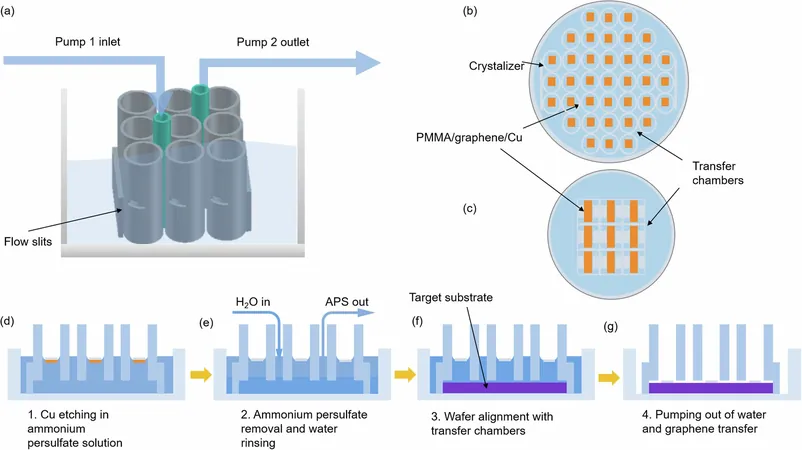
Alien-Like Microbes May Have Carved Tunnels Into Solid Rock Millions of Years Ago—The Shocking Discovery That Could Change Our Understanding of Life!
2025-03-25
Author: William
Deep in the arid deserts of Namibia, Oman, and Saudi Arabia, researchers have made a groundbreaking discovery that could rewrite the history of microbial life on Earth.
In an astonishing new study published in the Geomicrobiology Journal, scientists have identified thin, perfectly aligned tunnels carved through solid rock—marble and limestone—that they believe were created by ancient microbial life forms millions of years ago. These intricate structures challenge our understanding of geology and the role of microbes in shaping our planet's history.
Bizarre Structures Offer Geological Enigma
The journey of discovery began in Namibia, where scientists from Johannes Gutenberg University Mainz (JGU) stumbled across bizarre formations resembling tiny, uniform tubes measuring just half a millimeter in width and extending up to three centimeters. These tubes, running in parallel lines, were embedded in solid marble, leading researchers to suspect an unusual origin rather than natural geological processes. Subsequent investigations in Oman and Saudi Arabia revealed the same enigmatic formations in limestone and marble, further deepening the mystery.
Professor Cees Passchier from JGU, who first identified the strange formations, remarked, “We were surprised because these tubes are clearly not the result of a geological process.” What puzzled researchers even more was the content of the tunnels: they were not hollow but filled with fine calcium carbonate powder. This indicates that the microbes may have been dissolving the rock to extract nutrients, leaving behind this powdered residue.
Nature's Unlikely Artists: The Case for Biological Influence
Geologists found these structures perplexing, as they did not conform to typical patterns produced by erosion or mineral crystallization. Unlike random formations caused by natural elements like wind or water, these tunnels exhibited an uncanny order, stretching over ten meters in some locations. Several samples also revealed crusts of calcrete surrounding the edges, suggesting a biological process at play.
These crusts, commonly forming in semi-arid conditions, imply that the organisms responsible for this tunneling might have thrived in a vastly different, more humid climate one to two million years ago, offering a glimpse into the ancient biosphere of the Earth.
Could Ancient Endolithic Life Rewrite Our Understanding?
In an effort to investigate further, the Mainz University team collaborated with Dr. Trudy Wassenaar, an expert in molecular microbiology. Together, they propose that these tunnels are the work of endolithic microbes—tiny life forms that inhabit the interior of rocks and can thrive without sunlight. "What excites us most is the mystery surrounding the identity of these endolithic microorganisms,” Passchier stated. “Are they an already known species, or do they represent an entirely new form of life?”
Endolithic organisms, which include bacteria, fungi, and lichens, are adept at surviving in extreme environments, such as the icy depths of Antarctica and the desolate terrains of Mars. However, the microbial evidence in question is millions of years old, with any identifiable DNA or proteins having long since degraded, complicating efforts to determine their exact identity.
Impact on Earth’s Carbon Cycle: A Whole New Perspective?
The implications of this discovery extend beyond mere curiosity about ancient life. If these microbes were indeed dissolving calcium carbonate and impacting the carbon cycle, they could have played a crucial role in shaping Earth's climate over vast geological periods. Professor Passchier posits that microbial activities like these might be more significant to the global carbon cycle than previously acknowledged, particularly in arid regions where such organisms continue to thrive unnoticed.
“It is imperative for the scientific community to recognize the potential impact of microbial life on Earth's history and climate,” emphasized Passchier in the study. This finding not only opens new avenues for understanding the complex interactions between life and geology but also highlights the resilience of life in even the most challenging environments on our planet.
As researchers continue to dig deeper into this alien-like phenomenon, the story of Earth’s ancient microorganisms is just beginning to unfold. Stay tuned for more discoveries that continue to push the boundaries of our knowledge!









 Brasil (PT)
Brasil (PT)
 Canada (EN)
Canada (EN)
 Chile (ES)
Chile (ES)
 Česko (CS)
Česko (CS)
 대한민국 (KO)
대한민국 (KO)
 España (ES)
España (ES)
 France (FR)
France (FR)
 Hong Kong (EN)
Hong Kong (EN)
 Italia (IT)
Italia (IT)
 日本 (JA)
日本 (JA)
 Magyarország (HU)
Magyarország (HU)
 Norge (NO)
Norge (NO)
 Polska (PL)
Polska (PL)
 Schweiz (DE)
Schweiz (DE)
 Singapore (EN)
Singapore (EN)
 Sverige (SV)
Sverige (SV)
 Suomi (FI)
Suomi (FI)
 Türkiye (TR)
Türkiye (TR)
 الإمارات العربية المتحدة (AR)
الإمارات العربية المتحدة (AR)